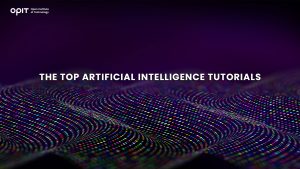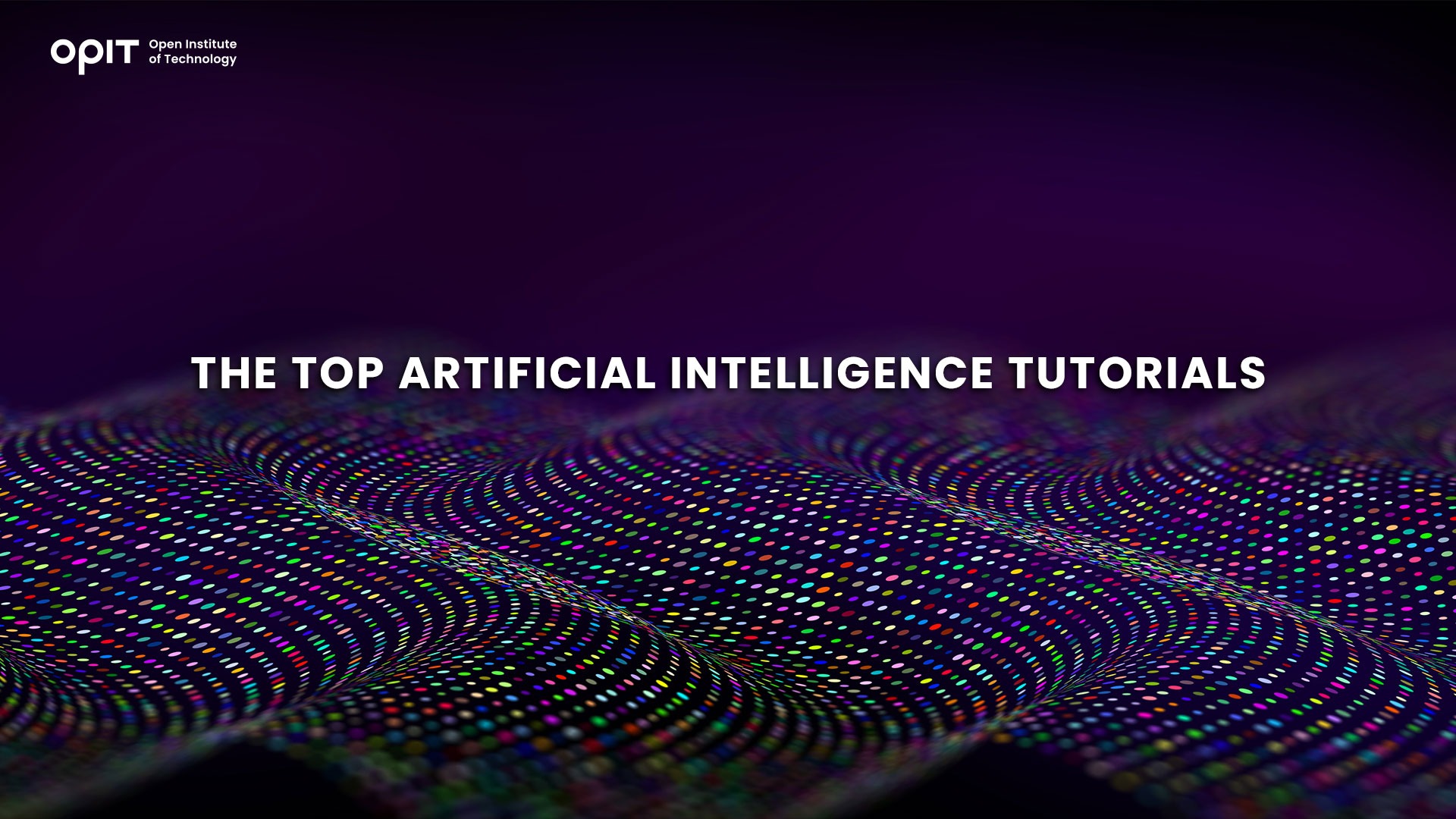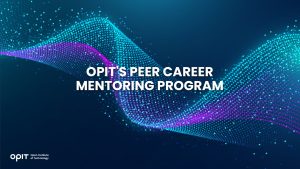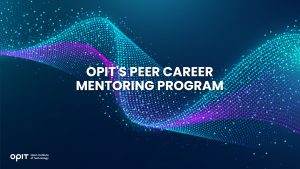

Artificial intelligence (AI) is a modern-day monolith that is likely going to be as important to the world as the introduction of the internet. We already see it creeping into every aspect of industry, from the basic chatbots you find on many websites to the self-driving cars under production at companies like Tesla.
As an industry, AI looks set to zoom past its current global valuation of $100 billion, becoming worth a staggering $2 trillion by 2030. To ensure you enjoy a prosperous career in an increasingly computer-powered world, you need to learn about AI. That’s where each artificial intelligence tutorial in this list can help you.
Top AI Tutorials for Beginners
If you know nothing about AI beyond the name, these are the three tutorials to get you started with the subject.
Tutorial 1 – Artificial Intelligence Tutorial for Beginners: Learn the Basics of AI (Guru99)
You need to get to the grips with AI theory before you can start with more practical work. Guru99’s tutorial helps you there, with a set of 11 lessons that take you from the most basic of concepts (what is AI?) to digging into the various types of machine learning. It’s like a crib notes version of an AI book, as it takes you on a speedy flight through AI fundamentals before capping its offer with a look at some practical applications.
Key Topics
- The basic theory of AI and machine learning
- Different types of machine learning algorithms
- An introduction to neural networking
Why Take This Artificial Intelligence Tutorial?
The tutorial is completely free, with every lesson being accessible via the Guru99 website with the click of a mouse. It’s also a great choice for complete AI newbies. You’ll cover the basics first, getting a grounding in AI in the process, before moving on to more complicated aspects of machine learning.
Tutorial 2 – Artificial Intelligence Tutorial for Beginners (Simplilearn)
This 14-lesson tutorial may seem intimidating at first. However, those 14 lessons only take an hour to complete, and the course has no prerequisites. This combination of brevity and a lack of tutorial requirements make it ideal for beginners who want to get to grips with the theory of AI. It’ll also help you develop some programming skills useful in more advanced courses.
Key Topics
- Basic programming skills you can use to develop AI models
- An introduction to Big Data and Spark
- Basic AI concepts, including machine learning, linear algebra, and algorithms
Why Take This Artificial Intelligence Tutorial?
Many of the tutorials you come across online will ask you to have a basic understanding of probability theory and linear algebra. This course equips you with those skills, in addition to giving you a solid grounding in many of the AI concepts (and machine learning models) you’ll encounter when you reach the intermediate level. Think of it as a crash course in the basics of AI.
Top AI Tutorials for Intermediate Learners
If you have a grasp of the basics, meaning you can separate your supervised learning algorithms from your unsupervised ones, you’re ready for these intermediate-level tutorials.
Tutorial 1 – Intro to Artificial Intelligence (Udacity)
Don’t let the use of the word “intro” in this tutorial’s name fool you because this is more than a mere explanation of AI concepts. As a four-month course, it requires you to have a good understanding of concepts like linear algebra and probability theory. Assuming you have that understanding, you’ll embark on a four-month self-paced learning journey (that’s completely free) that delves deep into the applications of AI.
Key Topics
- The theoretical and practical applications of natural language processing
- How AI has uses in every aspect of modern life, from advanced research to gaming
- The fundamentals of AI that underpin the practical applications you learn about
Why Take This Artificial Intelligence Tutorial?
The price tag is right, as this is one of the few Udacity courses you can take without spending any money. It’s also created by two of the best minds in AI – Peter Norvig and Sebastian Thrun – who deliver a nice mix of content, including instructor-led videos, quizzes, and experiential learning. Granted, there’s a large time commitment. But that commitment pays off as the course delivers a solid understanding of AI’s fundamentals and practical applications.
Tutorial 2 – Natural Language Processing Specialization (Coursera)
Anybody who’s used ChatGPT or “spoken” to a chatbot knows that a lot of companies are interested in what AI can do to deliver written content. That’s where Natural Language Processing (NLP) comes in, and this course is ideal for understanding the techniques that allow you to build chatbots and similar technologies.
Key Topics
- How to use logistic regression (and other techniques) to conduct sentiment analysis
- Build autocomplete and autocorrect models
- Discover how to develop AI algorithms that both detect and use human language
Why Take This Artificial Intelligence Tutorial?
Specialization is the key as you get deeper into the AI field. With this course, you focus your learning on language models and NLP, allowing you to dig deeper into an in-demand field that offers plenty of career opportunities. It’s somewhat intensive, requiring four months of study at about 10 hours per week to complete. But you get a shareable certificate at the end and develop a foundation in NLP that can apply in many business areas.
Top AI Tutorials for Advanced Learners
By the time you reach the advanced stage, you’re ready for your AI tutorials to teach you how to build and operate your own AI.
Tutorial 1 – Artificial Intelligence A-Z 2023: Build an AI With ChatGPT4 (Udemy)
With backing from a successful Kickstarter campaign, the Artificial Intelligence A-Z tutorial covers some of the fundamentals but focuses mostly on practical applications. You’ll create several types of AI, including a snazzy virtual self-driving car and an AI designed to beat simple games, helping you get to grips with how to put the theory you’ve learned into practice. The tutorial comes with 17 videos, a trio of downloadable resources, and 20 articles. All of which you can access whenever you need them.
Key Topics
- How to build practical AIs that actually do things
- The fundamentals of complex topics, such as Q-Learning
- How Asynchronous Advantage Actor Critic (AC3) applies to modern AI
Why Take This Artificial Intelligence Tutorial?
The two main reasons to take this tutorial are that it gives you hands-on experience with some exciting AI concepts, and you get a certificate you can put on your CV when you’ve finished. It’s well-structured and popular, with almost 204,000 students having already taken it from all over the world. And at just £59.99 (approx. €69), you get a lot of bang for your buck with videos, articles, and downloadable resources.
Tutorial 2 – A* Pathfinding Tutorial – Unity (YouTube)
Many prospective game developers will get their start with Unity, which is a free development tool that you can use to create surprisingly complex games. This YouTube tutorial series includes 10 videos, which walk you through how to use the A* algorithm to program AIs to determine the paths characters follow in a video game. It requires some programming knowledge, specifically C#, but it’s ideal for those who want to use their AI skills to transition into the world of gaming.
Key Topics
- Using the A* algorithm to create paths for AI-driven characters in video games
- Movement smoothing and terrain-related penalties
- Using multi-threading to improve pathfinding performance
Why Take This Artificial Intelligence Tutorial?
The price is certainly right for this tutorial, as the course creator (Sebastian Lague) makes all of his videos free to view on YouTube. But the biggest benefit of this tutorial is that it introduces complicated concepts that game developers use to determine character movement. If you’re interested in what makes video game characters “work” in terms of their actions in a game, this tutorial shows you the algorithm that underpins it all.
Additional AI Resources
The six tutorials in this list run the gamut from introducing you to the basics of AI to demonstrating specialized applications of the technology. Building on that knowledge requires you to go further, with the following books, podcasts, and websites all being great resources.
Great AI-Related Books
- Artificial Intelligence: A Modern Approach (Peter Norvig and Stuart Russell)
- Python: Advanced Guide to Artificial Intelligence (Giuseppe Bonaccorso)
- Neural Networks and Deep Learning (Charu C Aggarwal)
Great AI-Related Podcasts
- The AI Podcast (Noah Kravitz)
- Artificial Intelligence: AI Podcast (Lex Fridman)
- Eye on AI (Craig Smith)
Great AI-Related Websites and Blogs
- MIT News
- Analytics Vidhya
- KDnuggets
Understand Complex Concepts With an Artificial Intelligence Tutorial
AI is one of the world’s fastest-growing industries, with the previously-mentioned $2 trillion 2030 valuation representing a 20-fold growth from today. The point? Getting in close to the ground floor now by developing your understanding of AI concepts will set you up for a future in which many of the best jobs are in the AI field.
Each artificial intelligence tutorial in this list offers something different to students, from beginners who want to get to grips with AI to those who have a decent understanding and are ready to specialize. Regardless of the course you choose, the most important thing is that you keep learning. AI won’t stay static. It’s like a runaway locomotive that’s going to keep plowing forward, with nothing to stop it, to its next evolution. Use these tutorials to learn both basic and advanced concepts, then build on that learning with continued education.
Related posts

Source:
- Raconteur, published on November 06th, 2025
Many firms have conducted successful Artificial Intelligence (AI) pilot projects, but scaling them across departments and workflows remains a challenge. Inference costs, data silos, talent gaps and poor alignment with business strategy are just some of the issues that leave organisations trapped in pilot purgatory. This inability to scale successful experiments means AI’s potential for improving enterprise efficiency, decision-making and innovation isn’t fully realised. So what’s the solution?
Although it’s not a magic bullet, an AI operating model is really the foundation for scaling pilot projects up to enterprise-wide deployments. Essentially it’s a structured framework that defines how the organisation develops, deploys and governs AI. By bringing together infrastructure, data, people, and governance in a flexible and secure way, it ensures that AI delivers value at scale while remaining ethical and compliant.
“A successful AI proof-of-concept is like building a single race car that can go fast,” says Professor Yu Xiong, chair of business analytics at the UK-based Surrey Business School. “An efficient AI technology operations model, however, is the entire system – the processes, tools, and team structures – for continuously manufacturing, maintaining, and safely operating an entire fleet of cars.”
But while the importance of this framework is clear, how should enterprises establish and embed it?
“It begins with a clear strategy that defines objectives, desired outcomes, and measurable success criteria, such as model performance, bias detection, and regulatory compliance metrics,” says Professor Azadeh Haratiannezhadi, co-founder of generative AI company Taktify and professor of generative AI in cybersecurity at OPIT – the Open Institute of Technology.
Platforms, tools and MLOps pipelines that enable models to be deployed, monitored and scaled in a safe and efficient way are also essential in practical terms.
“Tools and infrastructure must also be selected with transparency, cost, and governance in mind,” says Efrain Ruh, continental chief technology officer for Europe at Digitate. “Crucially, organisations need to continuously monitor the evolving AI landscape and adapt their models to new capabilities and market offerings.”
An open approach
The most effective AI operating models are also founded on openness, interoperability and modularity. Open source platforms and tools provide greater control over data, deployment environments and costs, for example. These characteristics can help enterprises to avoid vendor lock-in, successfully align AI to business culture and values, and embed it safely into cross-department workflows.
“Modularity and platformisation…avoids building isolated ‘silos’ for each project,” explains professor Xiong. “Instead, it provides a shared, reusable ‘AI platform’ that integrates toolchains for data preparation, model training, deployment, monitoring, and retraining. This drastically improves efficiency and reduces the cost of redundant work.”
A strong data strategy is equally vital for ensuring high-quality performance and reducing bias. Ideally, the AI operating model should be cloud and LLM agnostic too.
“This allows organisations to coordinate and orchestrate AI agents from various sources, whether that’s internal or 3rd party,” says Babak Hodjat, global chief technology officer of AI at Cognizant. “The interoperability also means businesses can adopt an agile iterative process for AI projects that is guided by measuring efficiency, productivity, and quality gains, while guaranteeing trust and safety are built into all elements of design and implementation.”
A robust AI operating model should feature clear objectives for compliance, security and data privacy, as well as accountability structures. Richard Corbridge, chief information officer of Segro, advises organisations to: “Start small with well-scoped pilots that solve real pain points, then bake in repeatable patterns, data contracts, test harnesses, explainability checks and rollback plans, so learning can be scaled without multiplying risk. If you don’t codify how models are approved, deployed, monitored and retired, you won’t get past pilot purgatory.”
Of course, technology alone can’t drive successful AI adoption at scale: the right skills and culture are also essential for embedding AI across the enterprise.
“Multidisciplinary teams that combine technical expertise in AI, security, and governance with deep business knowledge create a foundation for sustainable adoption,” says Professor Haratiannezhadi. “Ongoing training ensures staff acquire advanced AI skills while understanding associated risks and responsibilities.”
Ultimately, an AI operating model is the playbook that enables an enterprise to use AI responsibly and effectively at scale. By drawing together governance, technological infrastructure, cultural change and open collaboration, it supports the shift from isolated experiments to the kind of sustainable AI capability that can drive competitive advantage.
In other words, it’s the foundation for turning ambition into reality, and finally escaping pilot purgatory for good.

The Open Institute of Technology (OPIT) is the perfect place for those looking to master the core skills and gain the fundamental knowledge they need to enter the exciting and dynamic environment of the tech industry. While OPIT’s various degrees and courses unlock the doors to numerous careers, students may not know exactly which line of work they wish to enter, or how, exactly, to take the next steps.
That’s why, as well as providing exceptional online education in fields like Responsible AI, Computer Science, and Digital Business, OPIT also offers an array of career-related services, like the Peer Career Mentoring Program. Designed to provide the expert advice and support students need, this program helps students and alumni gain inspiration and insight to map out their future careers.
Introducing the OPIT Peer Career Mentoring Program
As the name implies, OPIT’s Peer Career Mentoring Program is about connecting students and alumni with experienced peers to provide insights, guidance, and mentorship and support their next steps on both a personal and professional level.
It provides a highly supportive and empowering space in which current and former learners can receive career-related advice and guidance, harnessing the rich and varied experiences of the OPIT community to accelerate growth and development.
Meet the Mentors
Plenty of experienced, expert mentors have already signed up to play their part in the Peer Career Mentoring Program at OPIT. They include managers, analysts, researchers, and more, all ready and eager to share the benefits of their experience and their unique perspectives on the tech industry, careers in tech, and the educational experience at OPIT.
Examples include:
- Marco Lorenzi: Having graduated from the MSc in Applied Data Science and AI program at OPIT, Marco has since progressed to a role as a Prompt Engineer at RWS Group and is passionate about supporting younger learners as they take their first steps into the workforce or seek career evolution.
- Antonio Amendolagine: Antonio graduated from the OPIT MSc in Applied Data Science and AI and currently works as a Product Marketing and CRM Manager with MER MEC SpA, focusing on international B2B businesses. Like other mentors in the program, he enjoys helping students feel more confident about achieving their future aims.
- Asya Mantovani: Asya took the MSc in Responsible AI program at OPIT before taking the next steps in her career as a Software Engineer with Accenture, one of the largest IT companies in the world, and a trusted partner of the institute. With a firm belief in knowledge-sharing and mutual support, she’s eager to help students progress and succeed.
The Value of the Peer Mentoring Program
The OPIT Peer Career Mentoring Program is an invaluable source of support, inspiration, motivation, and guidance for the many students and graduates of OPIT who feel the need for a helping hand or guiding light to help them find the way or make the right decisions moving forward. It’s a program built around the sharing of wisdom, skills, and insights, designed to empower all who take part.
Every student is different. Some have very clear, fixed, and firm objectives in mind for their futures. Others may have a slightly more vague outline of where they want to go and what they want to do. Others live more in the moment, focusing purely on the here and now, but not thinking too far ahead. All of these different types of people may need guidance and support from time to time, and peer mentoring provides that.
This program is also just one of many ways in which OPIT bridges the gaps between learners around the world, creating a whole community of students and educators, linked together by their shared passions for technology and development. So, even though you may study remotely at OPIT, you never need to feel alone or isolated from your peers.
Additional Career Services Offered by OPIT
The Peer Career Mentoring Program is just one part of the larger array of career services that students enjoy at the Open Institute of Technology.
- Career Coaching and Support: Students can schedule one-to-one sessions with the institute’s experts to receive insightful feedback, flexibly customized to their exact needs and situation. They can request resume audits, hone their interview skills, and develop action plans for the future, all with the help of experienced, expert coaches.
- Resource Hub: Maybe you need help differentiating between various career paths, or seeing where your degree might take you. Or you need a bit of assistance in handling the challenges of the job-hunting process. Either way, the OPIT Resource Hub contains the in-depth guides you need to get ahead and gain practical skills to confidently move forward.
- Career Events: Regularly, OPIT hosts online career event sessions with industry experts and leaders as guest speakers about the topics that most interest today’s tech students and graduates. You can join workshops to sharpen your skills and become a better prospect in the job market, or just listen to the lessons and insights of the pros.
- Internship Opportunities: There are few better ways to begin your professional journey than an internship at a top-tier company. OPIT unlocks the doors to numerous internship roles with trusted institute partners, as well as additional professional and project opportunities where you can get hands-on work experience at a high level.
In addition to the above, OPIT also teams up with an array of leading organizations around the world, including some of the biggest names, including AWS, Accenture, and Hype. Through this network of trust, OPIT facilitates students’ steps into the world of work.
Start Your Study Journey Today
As well as the Peer Career Mentoring Program, OPIT provides numerous other exciting advantages for those who enroll, including progressive assessments, round-the-clock support, affordable rates, and a team of international professors from top universities with real-world experience in technology. In short, it’s the perfect place to push forward and get the knowledge you need to succeed.
So, if you’re eager to become a tech leader of tomorrow, learn more about OPIT today.
Have questions?
Visit our FAQ page or get in touch with us!
Write us at +39 335 576 0263
Get in touch at hello@opit.com
Talk to one of our Study Advisors
We are international
We can speak in:


